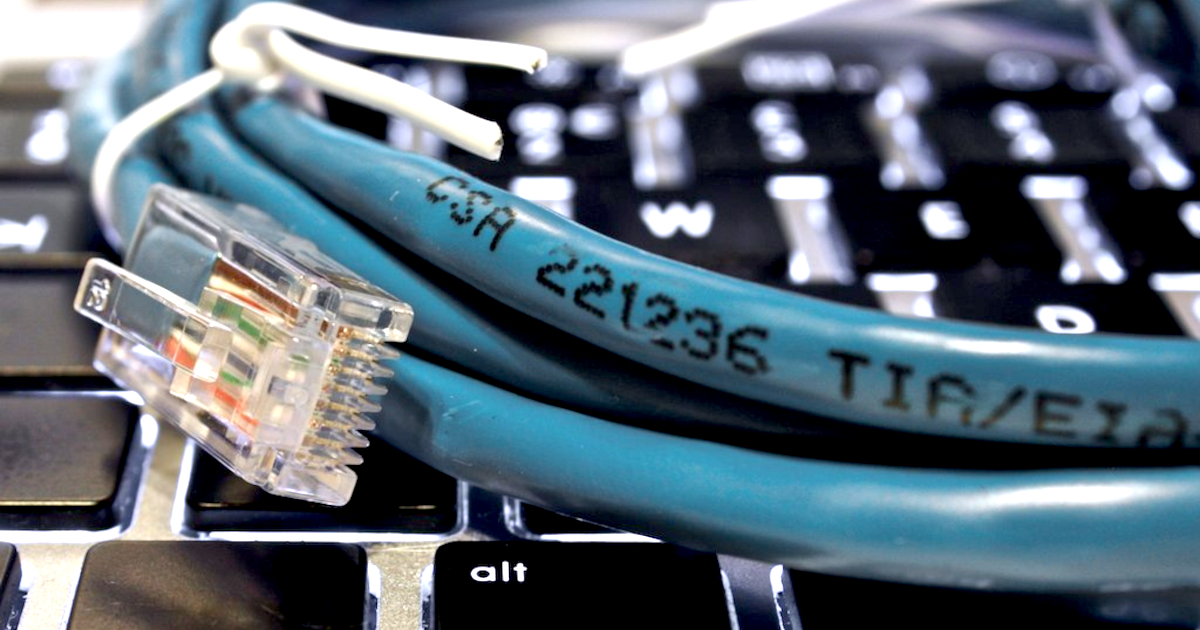Why Your Xfinity Internet Is Slow (and How to Improve It)
Pro tips to get your Xfinity internet moving
Jan 3, 2024 | Share
Brand Guides, Internet Speed Guides
Slow speeds on an Xfinity internet connection are often easy to fix. Sometimes, the solution is as simple as moving your router a few feet or restarting your equipment. We’ll give you the details on these quick fixes first.
If your Xfinity internet issues prove to be a little more tricky, move further down the page to our Xfinity troubleshooting tips. These tests and checks can help you figure out what’s wrong with your connection and whether or not you can fix the issue on your own.
Need a faster internet plan?
Enter your zip code below to compare provider speeds and pricing.
The most common reasons for slow Xfinity internet
Below, we’ve put together a list of the most common issues on an Xfinity network, some of which you can resolve within minutes. Click on an issue to auto-scroll to the solution.
You need to restart your equipment
Restarting your modem and router, or Xfinity gateway, allows your network to flush out any pesky glitches. This quick and easy fix should always be your first step.
Weak Wi-Fi
The ultra convenience of Wi-Fi comes with a catch: the internet signal is susceptible to blockages and interference. Thankfully, these issues are typically simple to remedy by removing obstructive materials, relocating your router or device, or by boosting your Wi-Fi network.
Local network congestion
Local network congestion usually happens when too many people are using the internet at once. Fixes include scheduling your internet usage around peak hours and upgrading your internet plan.
Outdated equipment
Your equipment (modem and router) must be able to take advantage of Xfinity’s latest network upgrades to get the most out of your internet connection. The latest internet and Wi-Fi standards, such as DOCSIS 3.1 and Wi-Fi 6e, can have a huge impact on your internet speeds.
Outdated devices
Sometimes older devices don’t jive well with the latest protocols and updates. If your slow speeds are confined to specific devices, it may be time for an upgrade.
Congestions on Xfinity’s end
Large-scale networks get congested as well. You can’t eliminate this kind of congestion, but you can mitigate the slowdowns.
Outages
Xfinity provides multiple ways of tracking progress on outages.
Pro tip:
If your internet is out entirely, take a look at our internet troubleshooting guide for all the tips on how to get that Wi-Fi gravy flowing again.
Tips to get your Xfinity home network running faster
Troubleshooting your Xfinity home network for issues with slow internet speeds can be a little daunting. Don’t worry—we’ve got a few surefire ways to optimize your Xfinity home network to get you up to speed.
And if you need a more in-depth walkthrough, check out our guide to troubleshooting your home network.
Start with a restart
Symptom: Slow speeds or network issues since last restart
A lot of the time, turning your modem and router off then on again can help with sluggish internet speeds. Doing this effectively gives your home networking equipment a chance to wipe away any glitches and start fresh.
Here’s how to restart your internet equipment (it’s super easy):
- Turn off or unplug your modem and your router.
- After about 10 seconds, turn your modem back on and wait for it to establish an internet connection. This could take a few minutes.
- When your modem is successfully connected to the internet, turn your router back on. It will reestablish your Wi-Fi network in a few minutes.
If you have an Xfinity gateway or modem and router combo device, simply turn it off, wait 10 seconds, and turn it back on.
If that doesn’t work, you can log in to your Xfinity account in a browser or with the Xfinity app to reset your modem or gateway from their end—this makes sure that your modem is synched up to their network as well.
Strengthen a weak Wi-Fi signal
For a healthy Wi-Fi signal, you need to avoid Wi-Fi obstructions near your router and devices. You also need a router with enough range to reach your devices.
Wi-Fi can pass easily through most household materials, but it has trouble with metal, stone, tile, concrete, and water. It’s best to avoid large deposits of these materials between your router and devices as much as possible. This doesn’t mean you have to stress every detail of your home’s composition but try to be mindful enough not to place the router beneath a metal table or behind a fish tank. Some electronic devices, like microwaves, garage door openers, and baby monitors can also interfere with your Wi-Fi signal. See our guides on finding the best spot for your router and moving your router to another room for more info.
Your Wi-Fi range depends on your router. Use the signal meter on your devices to judge whether or not you have enough Wi-Fi range (aim for three or more bars). If needed, there are many ways to increase your Wi-Fi range, such as long-range routers, Wi-Fi extenders, and good router placement.
Local network congestion
Symptom: Your internet provides the speeds advertised in your internet plan but still seems too slow, especially when multiple people are online
Your Xfinity internet might be slow because you don’t have enough bandwidth in your current plan to keep up with your internet use. This may especially be the case if you’ve started working or learning from home.
The easiest fix is to upgrade your internet plan. You can also try scheduling your internet usage to avoid big updates and other bandwidth-heavy activities during peak hours.
Check out the available Xfinity internet plans in your area to find the speed you need.
Upgrade your equipment
Symptom: Your router is more than 5 years old and often needs to be reset to restore internet speeds
If you often find yourself having to restart your router, it might be time to replace it with a better router for Xfinity. Wi-Fi standards have changed dramatically twice in the past seven years, so it’s quite possible that your router is out of date.
An old router can really mess with your internet use—most older routers are built to handle only a few connections at a time. If you have multiple people with multiple devices that slow down your router, it’d be a good idea to upgrade to a Wi-Fi 6 router. Newer routers are also better for range and data speed.
Get a new router from Xfinity
If you’re renting a gateway from Xfinity and haven’t had a replacement in several years, ask for a newer one. The xFi Wireless Gateway, xFi Advanced Gateway, and xFi Gateway 3rd Generation are Xfinity’s newest rental units. Ask if you can upgrade your old box to one of them.
Replace old devices
Symptom: Only certain devices have speed issues, regardless of location
If your slow internet problems are isolated to a single device—like a PC or smartphone—the issue may be with the device and not the internet. There are exceptions to this rule, of course, but if all your other connections work fine and one doesn’t, your network is probably working as it should.
There are a few reasons why an older device might not get good internet speeds, even if it has a wired connection or a strong Wi-Fi signal. For example, the device’s hardware might not be able to handle fast internet speeds because it was made before such internet speeds were possible.
What to do if the Xfinity network is congested
Xfinity is a cable internet network. A cable network is built around neighborhood-wide nodes, so your connection can slow down when too many users use the internet at the same time. Thankfully, Xfinity applies new tech upgrades to its network, which highly minimizes this type of cable-specific internet congestion. If it does still happen, it’s more like to occur in the evenings on weekdays.
You can tell Xfinity’s network is congested if slowdowns happen frequently around the same time of day (like in the early evenings when everyone gets off work and starts watching Netflix). If it makes you feel better, you’re probably not alone. All your neighbors who use Xfinity are also experiencing slower internet speeds at the same times as you.
If network congestion seems to happen a lot, keep track of when the network slows down and try to avoid being online at those times. Schedule big downloads (like computer updates or game patches) for late at night when there are fewer people online.
What to do if there’s an Xfinity network outage
If you stop receiving an internet signal altogether, it may be a network outage. One symptom of this is still having a Wi-Fi signal but no connection to the internet. You can check for a network outage on the Xfinity app, web account portal, or by consulting a website like DownDetector. This might save you some time, as there’s nothing an Xfinity customer service rep can do to repair an area-wide outage.
Every ISP, including Xfinity, suffers occasional internet outages. Sometimes these outages are for maintenance or due to bad weather conditions. Either way, the best thing to do if there’s an Xfinity network outage is to report it to Xfinity, which you can do by logging in to your Xfinity account and navigating to the Status Center.
In the Status Center, you’ll find an outage map to see if other people in your area have been affected. You can also opt-in to text alerts from Xfinity, so you’ll get progress reports about the network’s status. Unfortunately, if the network is down, you can’t really do anything but wait for Xfinity to fix the issue.
How to figure out why your Xfinity internet is slow
The first thing you should do to assess your Xfinity internet problem is take an internet speed test.
A speed test gives you an exact reading of your internet speeds in megabits per second (Mbps). When compared with your internet plan’s advertised speed, this reading will help you determine if you’re getting the speeds you’re paying for.
To get the most accurate measurement, close out any browser tabs or apps that are running other than the speed test and plug your computer into your router with Ethernet. Using your Wi-Fi to take the test is fine too, but most internet providers only guarantee their plan speeds over a direct Ethernet connection.
So, what kinds of speeds are you getting? If your speed test result is close to your Xfinity internet plan’s advertised speed, congratulations—you’re home network is performing just as intended! The bad news is that your internet plan is too slow to meet your needs—it’s probably time to upgrade.
View Xfinity PlansIf your speeds are far lower than what you’re paying for, then there’s likely an issue with your internet connection—either on Xfinity’s end as a provider or somewhere in your home network.
It’s likely an issue with Xfinity’s network when you experience any of the following:
- Sudden loss of internet connection, even though your Wi-Fi signal is still strong
- Slow speeds during certain times of day when a lot of people in your area get online (and you don’t have a lot of people using your home Wi-Fi)
- Fewer Mbps of bandwidth than your plan is supposed to give you
You can tell something’s up within your own home network when you have these issues:
- Slow Wi-Fi connections, even though wired Ethernet connections are fine
- Slower connections when multiple people in your home are using Wi-Fi
- Increasingly slow speeds or network issues since the last time you restarted your equipment
- Slow internet on one specific device but no problems on other devices
Pro tip:
If your internet is out entirely, take a look at our internet troubleshooting guide for all the tips on how to get that Wi-Fi gravy flowing again.
Wondering if there are better internet options out there from other providers? Run a search with your zip code to find out.
Xfinity speed problems and how to handle them
If you’re not getting the correct internet speeds from Xfinity, you should contact Xfinity customer service to get it fixed. The issue could be somewhere in your home’s cabling or deeper in the Xfinity network. Either way, you’ll need broadband tech to diagnose and fix the issue.
Again, if you experience problems even while getting your plan’s advertised speed, it may be best if you upgrade—that way, you’ll get faster speeds and better performance overall.
What to do if you simply aren’t getting enough Xfinity speed
There are two possible reasons why your Xfinity speed is too slow:
- You’re not signed up for a fast enough internet plan.
- You’re signed up for a fast internet plan but aren’t getting the speeds.
If you take an internet speed test and your result is near the amount of Mbps you’re supposed to be getting from Xfinity but you’re still having issues with slow internet, you may just need to upgrade your plan.
View Xfinity Plans
If you take a speed test (or several) and the results are much slower than you’re paying for, you need to take it up with Xfinity.
FAQ about slow Xfinity internet
How can I speed up my Xfinity Wi-Fi?
You can speed up your Xfinity Wi-Fi by upgrading your internet speed, updating your router, plugging your computer directly into your router using Ethernet, or moving your router to a more centralized location in your house.
What is download speed?
Download speed is internet speed that involves downloading content from the internet. Examples of using download speed include streaming video, reading emails, and downloading a video game update.
What is upload speed?
Upload speed is internet speed that involves uploading content to the internet. Examples of using upload speed include posting to social media, participating in a Zoom call, and uploading files to a cloud server. Upload speeds are usually much slower than download speeds, but fiber-optic internet delivers symmetrical upload and download speeds.
Author - Austin Aguirre
Austin worked as a broadband technician installing and troubleshooting countless home internet networks for some of the largest ISPs in the U.S. He became a freelance writer in 2020 specializing in software guides. After graduating with a BS in technical communication from Arizona State University, he joined the team at HighSpeedInternet.com where he focuses on home network improvement and troubleshooting.
Editor - Cara Haynes
Cara Haynes has been editing and writing in the digital space for seven years, and she's edited all things internet for HighSpeedInternet.com for five years. She graduated with a BA in English and a minor in editing from Brigham Young University. When she's not editing, she makes tech accessible through her freelance writing for brands like Pluralsight. She believes no one should feel lost in internet land and that a good internet connection significantly extends your life span.








